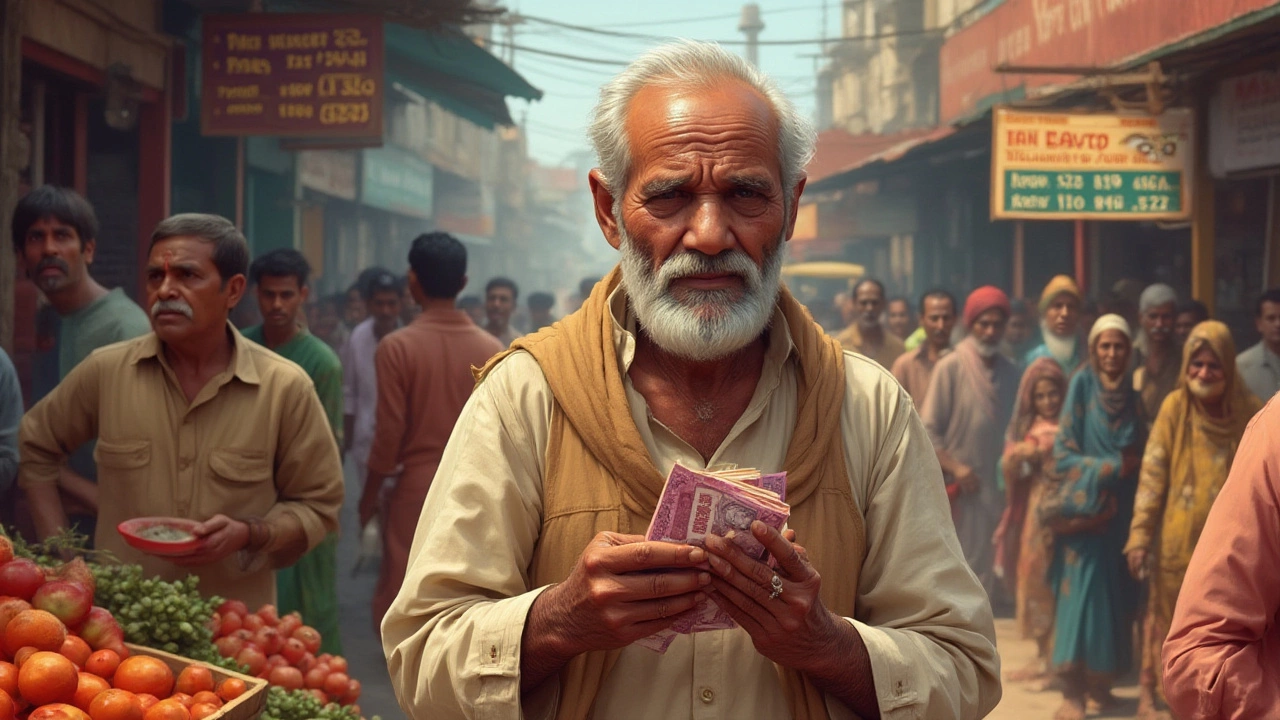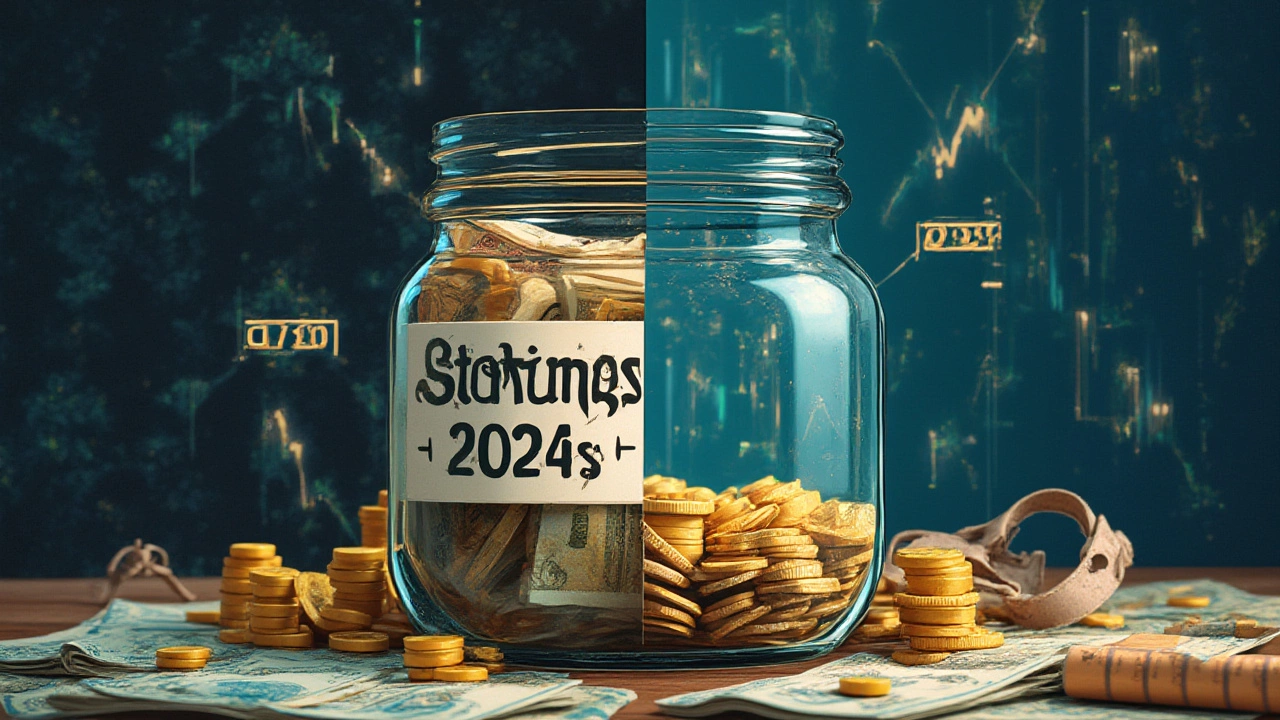If someone handed you 1 lakh rupees today, you might feel pretty confident—it’s a substantial sum for many people. But here’s the real kicker: this same 1 lakh is not going to buy you the same amount of goods or experiences 10 years from now. The way money loses value over time isn’t just some abstract finance lesson—it smacks you in the face when you remember those movie ticket prices from your childhood. Let’s break down what’s really going to happen to 1 lakh over the next decade, with numbers, facts, and zero sugarcoating.
Why 1 Lakh Won’t Be Worth the Same in 10 Years
Your grandparents nickel-and-dimed their way to buy things that sound almost impossible at today’s prices—a car for the cost of a fancy smartphone, or a hearty meal for a tenner. The invisible culprit? Inflation. Inflation means the general price level of goods and services creeps up year after year, and that means your rupees buy you less each time you go shopping. Over the last 20 years, India’s average inflation rate has hovered around 5% to 7%. Sure, some years it dips, some years it soars, but let’s take a ballpark figure of 6% just to keep it realistic. If we let 1 lakh sit idle for 10 years while the world goes about raising prices, here’s what happens.
Pull up your calculator (or let’s just use the classic formula), and you’ll see:
- Future Value = Present Value × (1 + Inflation Rate)^Number of Years
That’s 1,00,000 × (1.06)^10 = Rs 1,79,085. But here’s the kicker—that’s not what your 1 lakh turns into; that's how much you’d need in 10 years to buy what 1 lakh buys you today. In real terms, your untouched 1 lakh will lose almost 44% of its value by 2035.
Think of it this way: if you could fill your refrigerator for Rs 1,00,000 today, in 2035, you’d need almost Rs 1,79,000 to buy those same groceries. That means, if you stash that 1 lakh under your mattress or in a low-interest savings account, it’s shrinking. It’s not just numbers—this is your holiday, your dream gadget, your family’s comfort that you’re risking.
How Different Investments Protect (or Grow) Your Money
Leaving cash sitting around isn’t just lazy; it’s expensive. But not all investments are created equal. Let’s talk about the usual places Indians park their money—savings accounts, fixed deposits (FDs), mutual funds, stocks, even real estate. Each comes with different returns, risks, and a little bit of that classic dinner table debate.
Savings accounts? Most banks offer somewhere between 2.5% and 4%. That’s not even enough to keep up with the 6% inflation monster eating into your money every year. Fixed deposits are better—right now, you might get up to 7% if you hunt for the best rates. But just stashing and forgetting it means you’re barely staying afloat; taxes on FD interest can nibble away at your returns, too, unless it’s a tax-free bond or scheme.
Mutual funds and stocks? That’s where things start to look up. Historically, equity mutual funds in India have delivered somewhere around 12% returns per year over the long run. Of course, there are bad patches—the COVID-19 dip, the 2008 crash—but over a decade, markets tend to bounce back. SIPs (Systematic Investment Plans) help ride out the volatility. For the cautious, debt mutual funds or hybrid funds bring less risk, though also more modest returns, often around 6%–9%.
And then there’s property. If you’re dreaming of that second flat or a plot in an up-and-coming area, keep in mind that real estate markets are like Indian monsoons—hard to predict and sometimes bone-dry. The last decade saw big swings in prices; while some urban hotspots boomed, other areas stagnated.
- For someone playing it safe with FDs at 7%, 1 lakh becomes Rs 1,96,715 in 10 years—still just about keeping up with inflation.
- Putting your faith in stocks or equity mutual funds averaging 12%, your 1 lakh could grow to about Rs 3,10,600.
- Property? Very location specific, but an annual compound return of 8% would bring your lakh to around Rs 2,15,892 after a decade.
- Piling cash in a locker? Still Rs 1,00,000. Ouch—now it’s worth only about 56,000 in today’s terms.

Inflation Isn’t Equal Everywhere: Urban, Rural, Lifestyle Factors
Notice how all those calculators and “future value” apps spit out a single number? Real life, though, isn’t that neat. Inflation for a city dweller in Mumbai doesn’t quite feel the same as it does for someone farming outside Nashik. Food inflation might be higher in rural India, while education and healthcare see astronomical increases in metros. In the last decade, middle-class Indian household expenses rose fastest on healthcare and education—at times, jumping over 10% each year, while items like electronics sometimes deflated in price as tech got cheaper.
So, if your 1 lakh spends mostly on luxury goods, big cities, or health costs, you’re facing bigger inflation bullets. You’ll probably need more than what the math suggests just to keep standards the same. If you’re living frugally and prices in your area have risen only moderately, maybe you dodge that bullet for a while—but don’t count on it. Food, fuel, and utilities rarely turn cheaper over time. A 2022 RBI study found that rural food inflation averaged almost 6% over the previous decade, compared to urban food inflation at 5.7%. For education and healthcare, urban inflation rates have been way higher—private school fees, for instance, have gone up by 10–12% a year in some megacities. These little details can make a huge difference in how much 1 lakh stretches down the line.
Making Smart Moves: Tips to Beat the Value Erosion
Nobody wants their hard-earned cash to wither away. So how do you keep your 1 lakh relevant and maybe even supersize it for the years ahead?
- Start Investing Early and Regularly: The sooner you begin, the better compounding works for you. Regular SIPs in equity funds over a decade could potentially double or even triple your 1 lakh, even after taxes and inflation.
- Don’t Chase Crazy Returns: If it sounds too good to be true—like random crypto coins or high-interest Ponzi schemes—walk away. Don’t let FOMO (fear of missing out) burn your wealth.
- Diversify: Split your investments across different assets—equity, fixed income, maybe even a small slice in gold or REITs if you’re feeling adventurous. This spreads risk so one bad patch doesn’t wipe you out.
- Keep Tabs on Inflation: Adjust your financial goals every couple of years, checking how costs are rising in the stuff you actually spend on (don’t forget health insurance, education for kids, or planned big purchases).
- Avoid Parking in Idle Cash: Unless you’ve got an emergency fund or you’re about to pay for something soon, don’t let money sit where it barely grows.
- Tax Efficiency Counts: Make use of PPF, ELSS mutual funds, or NPS for tax savings—these can add up quietly over 10 years.
And don’t make it a once-in-a-year thing—get into the habit of reviewing your portfolio every few months. With digital tools and apps, tracking returns is way easier than it used to be.

What Else Could Shake Up the Value of 1 Lakh?
No one has a crystal ball—but economists love to guess. Major events like new government policies, changes in GST or tax laws, global economic swings, or even tech disruptions can mess with inflation and investment returns. Remember the demonetization upheaval or the unexpected COVID-19 economic shock? Those didn’t just rattle markets for a month—they changed how people invested, spent, and saved for years. If interest rates climb, debt investments may look better for a few years; if the economy slows, stock returns might lag their historic averages.
In 2024, India’s GDP growth forecast stayed steady at around 6.8%, and major economists estimated consumer inflation would cool to around 4% by 2026. But these are educated guesses—will a new government in 2029 launch major reforms, or will global crises push inflation back up? No algorithm can predict it perfectly.
Another wild card: the digital rupee. The Reserve Bank of India launched pilot projects for a central bank digital currency (CBDC) in 2023, and by 2025, more shops and platforms are accepting e-rupee for transactions. Could money as we know it change in value, function, or security? The pace of transformation is picking up faster than most could anticipate.
One more factor no one talks about? Your own changing lifestyle. Maybe you’ll have a family, change careers, move cities, or develop new hobbies. The true future value of 1 lakh will depend on what you spend on and what matters to you in 2035.
